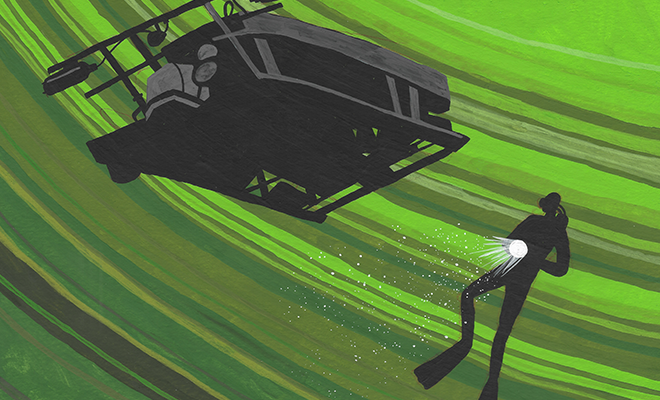Entering the deep unknown has the potential to demystify some parts of the ocean and to contribute to new visions of mythical character. Why is it that the world’s oceans play such an integral part in future plans for humanities survival on this planet? And what role does technology play in past and future ocean scenarios?
The deep ocean has historically been a mystery to humankind. For the longest time, seafaring was nothing but dangerous and life below the surface largely unknown. Still all species on Earth have lived off - or in other ways benefitted from - marine ecosystems; some researchers even think that the origin of life on Earth can be traced back to deep-sea vents. As humans venture into ocean space, we begin to understand the complexity of the oceanic environment and the limits of the ‘services’ the oceans can provide to human society. In the 21st century, a variety of underwater technologies allow scientists and researchers around the world to observe and study the state of the world’s oceans in new ways, as the world community tries to find just the right balance between over-exploitation and conservation of marine ecosystems. ‘Humanoid Oceans’ seeks to contribute to highlighting the possibilities, challenges and pitfalls of different types of underwater technology, by historicizing how those technologies have shaped and unfolded a map of formerly unknown spaces of the deep-sea environment.
About the speaker
Tirza Meyer is a contemporary historian and postdoctoral researcher at KTH Royal Institute of Technology in Stockholm and a visiting scholar at the Oslo School of Environmental Humanities. She works on the history of media and environment with a specific focus on the history of ocean governance and environment. Her broader research interests are the Blue Humanities, environmental history, the history of the Law of the Sea, ocean governance concepts, science and technology and human-ocean relations. Her book Elisabeth Mann and the Law of the Sea will be published in April 2022. Tirza Meyer is affiliated with the Formas-funded project “The Mediated Planet: Claiming Data for Environmental SDGs” and she is a member of the OSEH Collaboratory Media Seas of the High North Atlantic.
About the event series
The OSEH Environmental Lunchtime Discussion series consists of short, 15 minute presentations by invited guests, followed by a discussion. We invite speakers from a wide variety of fields, both academic and beyond. The presentations are accessible and are aimed at anyone with an interest in environmental issues. All are welcome.
